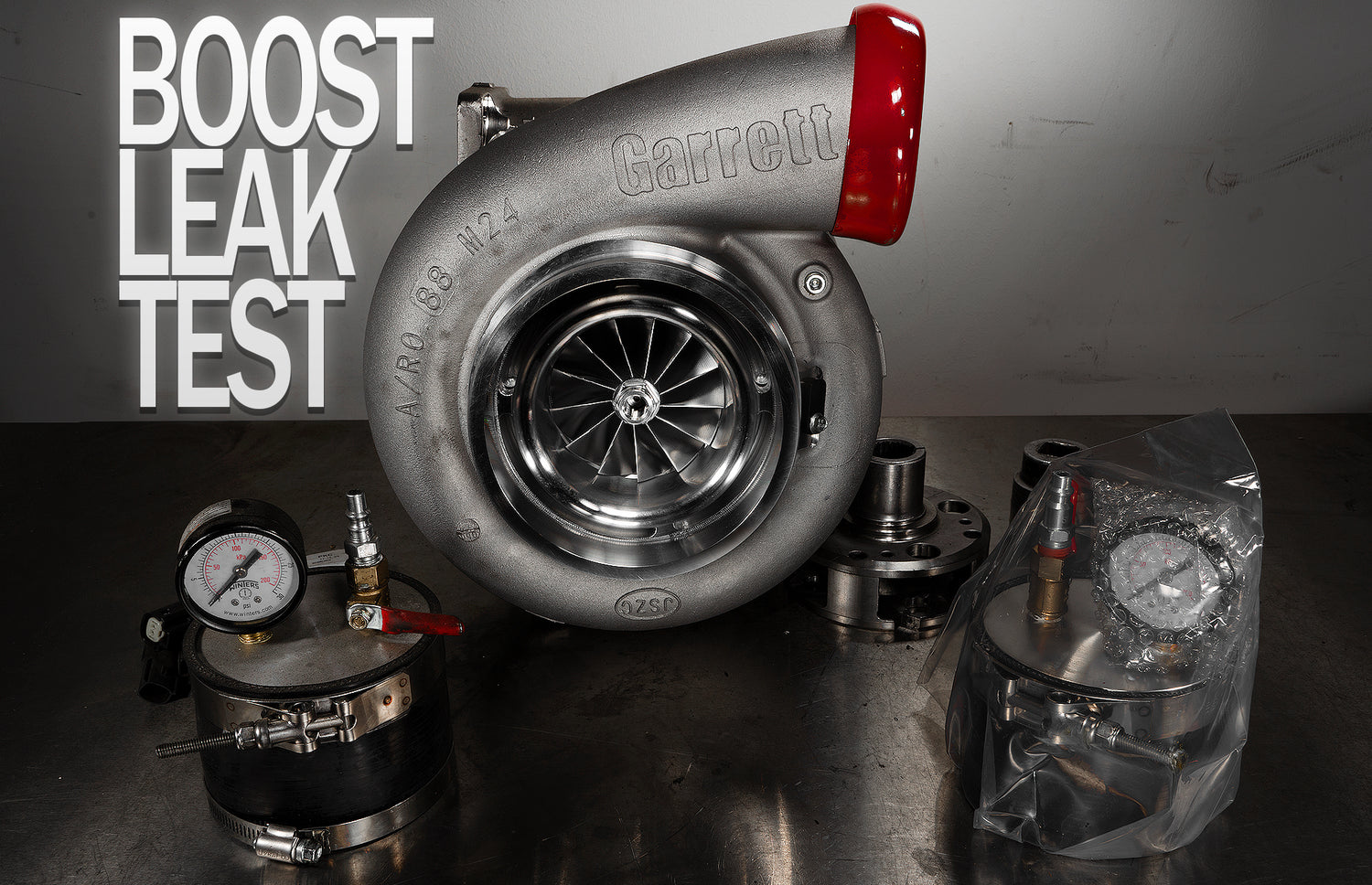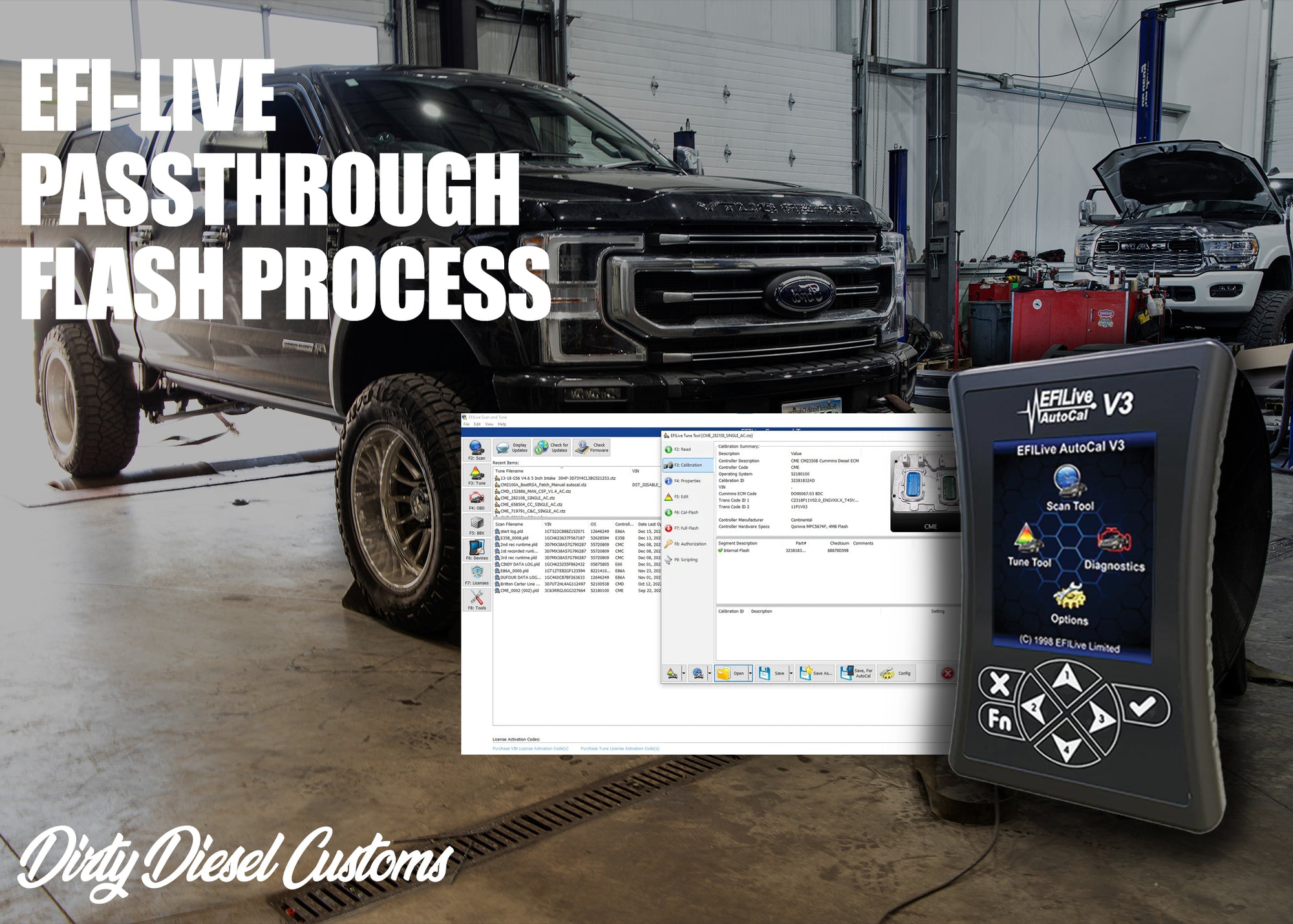How to Perform a Boost Leak Test on a Cummins, Duramax, & Powerstroke
A very common problem on any turbocharged diesel truck, is a boost leak. Without the correct tools, these can be tricky to track down since you can't rely on a visible leak to narrow down the area. Before we get into where a boost leak occurs on your truck and how to diagnose, let's first touch on the Charge Air System.
What is a Charge Air System?
Fresh outside air will get pulled in through your air filter, the air is then compressed by the turbocharger. This compressed air keeps the intercooler pipes, intercooler, and intake manifold under constant pressure while driving. This system is what is referred to as your charge air system. The Pressure within this system will vary depending on the engine load, however, on a diesel truck your "charge air system" will always remain under pressure, even if it's a very slight amount.
What are the symptoms of a Boost Leak?
Boost leaks can appear in a few different ways, but here are some of the more noticeable symptoms to be on the watch for.
- A "Laggy" feeling truck:
- Why? Losing boost pressure in the Charge Air System results in a loss of power (Ever try to run an impact on a compressor with low air? Similar case here). The turbo needs to pressurize the charge air system to force air into the engine, if there's a leak, it takes longer to fill this system (if it even can at all).
- Excessive smoke:
- Why? The engine is getting fuel, but not enough air, so this makes black smoke which is unburnt fuel.
- Higher EGT's:
- Why? Lack of air will make for your exhaust temps to run higher than normal. Cold dense air is ideal for complete combustion inside the cylinder.
- Poor fuel mileage:
- Why? Your engine will not be running at it's ideal parameters with low boost, this will result in poor mileage.
Where do Boost Leaks occur?
Boost leaks can happen in many places under the hood. The intercooler can crack, manifolds break, bolts come loose, pipes can rub through, clamps break, but the most common place is an intercooler hose. IC hoses (intercooler hoses) are used to connect the intercooler pipes from the turbocharger, intercooler, and manifold. This allows some give in the piping as the engine moves under the hood.
IC hoses are often made of rubber or silicone products and are clamped on by using spring or gear clamps. If there is anything rubbing against them, or merely wearing down over time, they may spring a leak. These leaks can be hard to find as they may only open up under high load. It’s hard to have your head under the hood while doing 100 km/h down the highway to find these leaks, so what else can we do to find the leaks?
How to Find a Boost Leak?
We have seen many home made tools built over the years, and to be honest, it doesn’t matter how pretty your tester is. If you can pressure up your charge air system, you can find the leak. Basically you want to get the system under normal operating pressure. We like to use a tool provided by KC Turbos.
This tool will connect between your air filter and your turbo. Most of the common trucks will have a 4” diameter connection somewhere in this system, however, this could vary depending on the application. What we do is connect the pressure tester in between the air filter and turbo, and use shop air to SLOWLY put pressure into the charge air system.
Note: Make sure to connect the tester downstream from where the PCV/CCV reenters the intake if applicable, you do not want to pressure up your engine block.
Be sure to not overpressure the charge air system as your compressor at home could put out up to 150psi, and your truck may max out at 35psi. Typically, 15-20psi is all you'll need to find a pretty small leak. Once you get pressure in the system, you'll most likely be able to hear an audible leak. If there is no audible leak, you can carefully run your hands around the connections to see if there are any leaks. COMPRESSED AIR CAN BE DEADLY, SO BE SURE TO USE GLOVES IF YOU ARE WORKING WITH HIGH PRESSURES. If you are having troubles tracking down the leak, try wiggling the pipes to help narrow down where the sound is coming from.
Once you have found the leak, you can repair and retest.
Preventative Measures
Thankfully, Boost Leaks are usually a pretty easy fix, but here’s a few common upgrades that we offer to help prevent them from happening.
| Cummins Upgrades | Duramax Upgrades | Powerstroke Upgrades |





